The Most Effective SAFe Scrum Master Certification Exam Preparation
The ScholarAcad Advantage
1. Module: Introduction of Scrum in SAFe
- Concepts of Basic Agile Development
- Basics of Scrum
- Establish Agile Team in SAFe Enterprises
2. Module: Scrum Master Role Characterization
- Scrum Master Responsibilities
- Effective Scrum Master Characteristics
- High-performing Teams
- Use Powerful Questions to Coach Agile Team
- Team Events
- Cross Team Collaboration
- Resolve Conflicts in Teams
3. Module: Experience PI Planning
- Basics of PI Planning
- Drafting PI Planning
- Business Value and Final Plans
- PI Objectives and Final Plan Review
- Facilitate PI Planning
4. Module: Facilitate Iteration Execution
- Plan Iteration
- Track Progress of Iteration
- Refine Backlogs
- Facilitation Iteration Reviews
- Implement Relentless Improvement
- Supports Release-on-Demand and DevOps
5. Module: Finish PI
- Coach IP Iteration
- Preparing Team to Inspect & Adapt Event
6. Module: Practice SAFe
- SAFe Practice in Organizations
View More
Who This Course is For

Prerequisites and Eligibility
No formal prerequisites: Open to individuals with varying levels of experience and backgrounds.
Familiarity with Agile principles and the Scrum framework is beneficial.
Completion of the SAFe for Teams course is required to establish a foundation in SAFe concepts.
Passing the SAFe Scrum Master exam (SSM) validates your understanding of SAFe and Scrum principles.
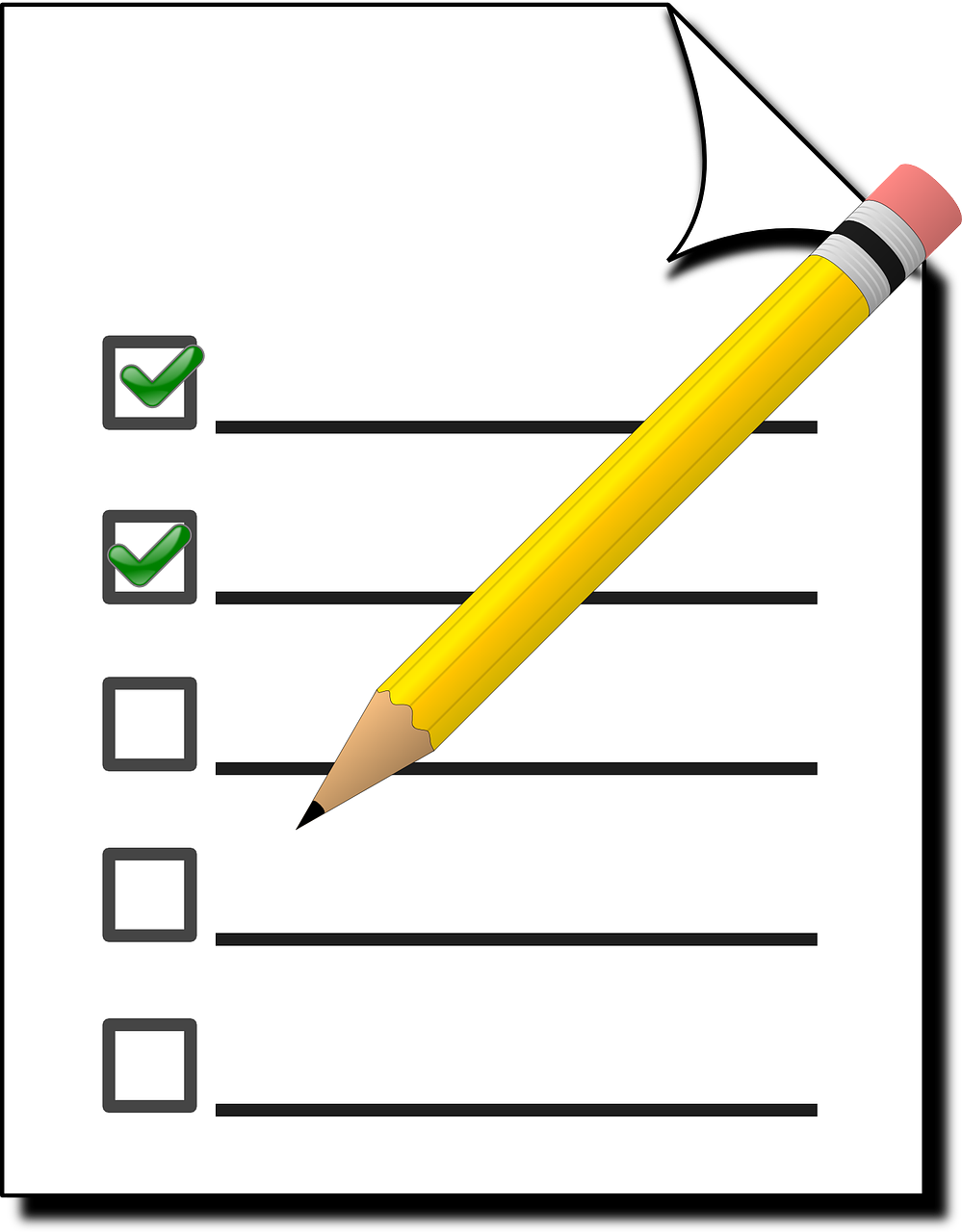
SAFe Scrum Master Certification Among the Highest Paying Certifications





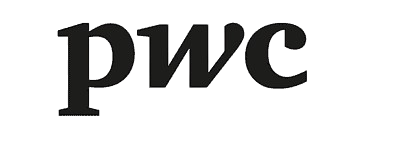
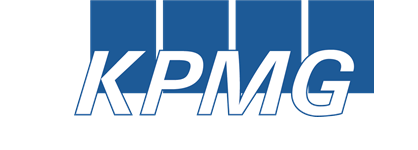




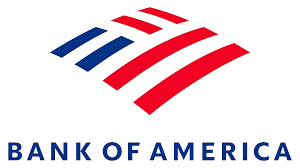



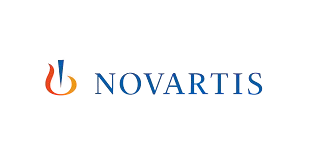
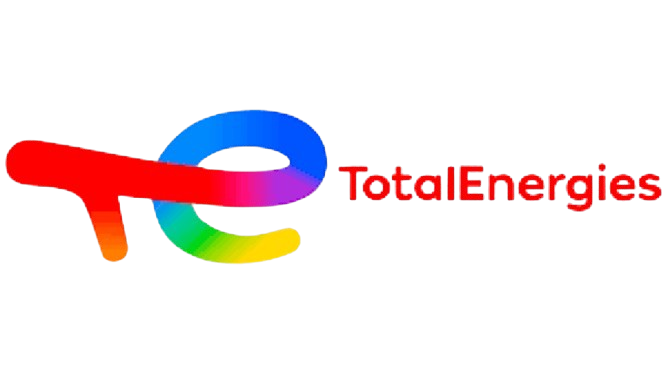



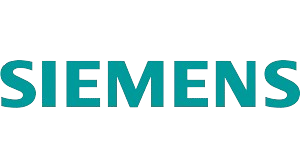
Training Calender For Course SAFe Scrum Master Certification
Your Path to Acing Your SAFe Scrum Master Certification Exam

Grasp the overarching structure and how different components interconnect.
Understand the Scrum framework, its roles, events, artifacts, and ceremonies.
Grasp the principles and practices of Kanban for visualizing work and flow.
Understand the responsibilities of a SAFe Scrum Master.
Believe in continuous improvement and learning.
Participate in simulations, case studies, and practical exercises.
Practice with Mock Exams and Take your exam.
Our SAFe Scrum Master Certification Instructors in Switzerland
Based in: Zurich, Switzerland
Are you looking for a PMP trainer in Switzerland who values precision, quality, and a comprehensive understanding of project management? Meet Andreas Müller, an experienced and certified PMP instructor based in Zurich. Andreas is dedicated to helping project professionals in Switzerland achieve their PMP certification through thorough and effective training.
Professional Background:
Andreas has over 18 years of experience managing projects in the finance, pharmaceuticals, and technology sectors within Switzerland. His experience includes working with highly regulated industries and adhering to strict quality standards, giving him a deep understanding of meticulous project management practices. He is proficient in both traditional Waterfall and Agile methodologies, with a strong focus on planning, risk, and quality management.
Certifications:
- **Project Management Professional (PMP)**®
- **PMI Risk Management Professional (PMI-RMP)**®
- IPMA Level B® (Certified Senior Project Manager)
Teaching Philosophy:
Andreas believes in a precise, structured, and comprehensive approach to PMP training, ensuring participants gain a deep understanding of the PMBOK® Guide and are well-prepared for the rigorous PMP exam. His teaching philosophy focuses on:
- Detailed and Thorough Explanation: Presenting the PMBOK® Guide concepts with precision and clarity, aligning with the Swiss emphasis on detail and accuracy.
- Practical Application and Industry Relevance: Connecting theoretical concepts to real-world examples and case studies relevant to the Swiss business environment, particularly in regulated industries.
- Emphasis on Exam Rigor and Preparation: Providing comprehensive practice materials, realistic mock exams, and effective test-taking strategies.
- Structured and Organized Learning Environment: Encouraging focused learning and providing clear guidance throughout the training process.
Course Offerings:
Andreas offers a range of PMP training programs tailored to the needs of professionals in Switzerland:
- Intensive PMP Exam Preparation Bootcamps (In-Person in Zurich and Virtual): Focused and comprehensive programs designed for thorough exam preparation.
- Weekend PMP Certification Courses: Convenient options for working professionals in Switzerland.
- Customized In-House PMP Training for Companies: Tailored programs for organizations across Switzerland looking to enhance their project management expertise, particularly in regulated sectors.
Why Choose Andreas?
- Based in Switzerland's Financial Hub: Located in Zurich, Andreas offers in-person training options in a key economic center and virtual sessions across Switzerland and Europe.
- Deep Understanding of Swiss Business Practices: His extensive experience in the Swiss market provides valuable context and insights, especially in regulated industries.
- Precise, Structured, and Effective Training: His methodical approach ensures thorough preparation for the demanding PMP exam.
- Highly Experienced and Credible Instructor: Andreas's certifications and long track record demonstrate his expertise in project management.
Location:
Andreas is based in Zurich, Switzerland, and offers in-person training sessions in Zurich and virtual training programs for participants across Switzerland and Europe.

Andreas Müller
Experience: 18 years
SAFe Scrum Master Certification Earn The Coveted SAFe Scrum Master Certification Certification

Sample Certificate Image
View More
Our Learners Love Us
The Business Analysis Foundation training with Umesh at Scholaracad was really valuable. His explanations were clear, and the examples were relevant to projects in Switzerland. The Scholaracad team was very responsive. Danke schon!

The COBIT training with Umesh at Scholaracad was really valuable. His explanations were clear, and the examples were relevant to projects in Switzerland. The Scholaracad team was very responsive. Danke schön!

The PRINCE2 Foundation and Practitioner course with Scholaracad was really valuable. Trainer Stefan was very knowledgeable and explained the concepts clearly, using examples relevant to projects in Switzerland. The Scholaracad team was very responsive and helpful !

Learning Objectives
General Frequently Asked Questions
1. What is a SAFe Scrum Master?
A SAFe Scrum Master is a professional who facilitates Agile teams within the Scaled Agile Framework (SAFe) to deliver value efficiently. They coach teams, remove impediments, and ensure alignment with SAFe principles.
2. What is the difference between a Scrum Master and a SAFe Scrum Master?
A traditional Scrum Master focuses on a single team, while a SAFe Scrum Master works within the broader SAFe framework, often supporting multiple teams and aligning them with the Program Increment (PI) objectives.
3. What are the key responsibilities of a SAFe Scrum Master?
- Facilitating Agile ceremonies (e.g., Sprint Planning, Daily Standups, Retrospectives).
- Removing impediments for the team.
- Coaching teams on Agile principles and practices.
- Supporting the Product Owner in backlog refinement.
- Ensuring alignment with PI objectives.
4. What skills are required to become a successful SAFe Scrum Master?
- Strong facilitation and communication skills.
- Deep understanding of Agile and SAFe principles.
- Problem-solving and conflict resolution abilities.
- Leadership and coaching skills.
- Knowledge of Lean-Agile practices.
5. Is certification necessary to become a SAFe Scrum Master?
While not mandatory, certification (e.g., SAFe Scrum Master Certification) is highly recommended as it validates your knowledge and increases employability.
6. What is the SAFe Scrum Master Certification?
The SAFe Scrum Master Certification (SSM) is a credential offered by Scaled Agile, Inc. It demonstrates expertise in applying Scrum within the SAFe framework.
7. How do I get certified as a SAFe Scrum Master?
- Attend the official SAFe Scrum Master course (2-day training).
- Pass the online exam.
- Maintain certification through continuous learning and renewal.
8. What is the cost of the SAFe Scrum Master certification?
The cost is typically around $995-$1,295 for the 2-day course, depending on the training provider.
9. How long does the SAFe Scrum Master certification last?
The certification is valid for 1 year and requires renewal annually by earning 10 continuing education units (SEUs) and paying a renewal fee.
10. What is the average salary of a SAFe Scrum Master?
The average salary varies by location and experience:
- USA : $90,000–$120,000 per year.
- India : ₹10–20 lakhs per year.
- Europe : €60,000–€90,000 per year.
11. What industries hire SAFe Scrum Masters?
Industries include:
- IT and software development.
- Financial services.
- Healthcare.
- Manufacturing.
- Government and defense.
12. What is the career path for a SAFe Scrum Master?
Junior Scrum Master → SAFe Scrum Master → Release Train Engineer (RTE) → Agile Coach → Transformation Lead.
13. Can a SAFe Scrum Master work remotely?
Yes, many organizations allow remote work, especially in tech companies or those with distributed teams.
14. What tools should a SAFe Scrum Master be familiar with?
- Jira, Azure DevOps, or Rally for Agile project management.
- Confluence or SharePoint for documentation.
- Collaboration tools like Slack, Microsoft Teams, or Zoom
15. What is a Release Train Engineer (RTE), and how does it relate to a SAFe Scrum Master?
An RTE facilitates Agile Release Trains (ARTs) at the program level, coordinating multiple teams. A SAFe Scrum Master can advance to become an RTE.
16. What is the difference between a SAFe Scrum Master and an Agile Coach?
A SAFe Scrum Master focuses on team-level execution, while an Agile Coach works at the organizational level to drive Agile transformation.
17. How does SAFe differ from other Agile frameworks like Scrum or Kanban?
SAFe is a scaled framework designed for large enterprises, integrating Scrum, Kanban, and Lean principles to coordinate multiple teams.
18. What challenges do SAFe Scrum Masters face?
- Resistance to Agile adoption.
- Balancing team autonomy with organizational goals.
- Managing dependencies across teams.
- Aligning with PI objectives.
19. How important is experience in becoming a SAFe Scrum Master?
Experience in Agile methodologies and team facilitation is crucial. Prior roles as a Scrum Master, Project Manager, or Team Lead are beneficial.
20. Can a non-technical person become a SAFe Scrum Master?
Yes, but understanding the technical aspects of the team’s work can enhance effectiveness.
21. What is a Program Increment (PI) in SAFe?
A PI is a timebox (typically 8–12 weeks) during which multiple Agile teams work together to deliver value. The SAFe Scrum Master ensures their team contributes to PI objectives.
22. What is PI Planning, and what role does the SAFe Scrum Master play?
PI Planning is a key event where teams plan work for the upcoming PI. The SAFe Scrum Master facilitates team preparation, participation, and follow-through.
23. How does a SAFe Scrum Master handle conflicts within the team?
By fostering open communication, mediating discussions, and helping the team find collaborative solutions.
24. What is the role of metrics in a SAFe Scrum Master’s job?
Metrics (e.g., velocity, burndown charts) help track progress, identify bottlenecks, and improve team performance
25. How does a SAFe Scrum Master contribute to continuous improvement?
By facilitating retrospectives, encouraging feedback loops, and promoting a culture of learning and adaptation.
26. What is the importance of servant leadership for a SAFe Scrum Master?
Servant leadership emphasizes empowering the team, removing obstacles, and fostering a collaborative environment.
27. How does a SAFe Scrum Master interact with the Product Owner?
They collaborate to ensure the backlog is well-refined, priorities are clear, and the team delivers value consistently.
28. What is the role of a SAFe Scrum Master in DevOps?
They support collaboration between development and operations teams to enable continuous delivery and integration.
29. Can a SAFe Scrum Master work with multiple teams?
Yes, they often support multiple teams, especially in large-scale Agile implementations.
30. What is the typical team size managed by a SAFe Scrum Master?
5–11 members per team, following the Scrum guidelines.
31. How does a SAFe Scrum Master handle scope changes?
By working with the Product Owner and stakeholders to assess impact, prioritize changes, and adjust plans accordingly.
32. What is the role of a SAFe Scrum Master in risk management?
They identify risks early, escalate when necessary, and help the team mitigate them.
33. How does a SAFe Scrum Master foster innovation?
By encouraging experimentation, supporting new ideas, and creating a safe environment for learning.
34. What soft skills are critical for a SAFe Scrum Master?
Empathy, active listening, adaptability, and emotional intelligence
35. How does a SAFe Scrum Master measure success?
Through team performance metrics, stakeholder satisfaction, and alignment with business goals.
36. What is the role of a SAFe Scrum Master in a distributed team?
Facilitating communication, ensuring alignment, and addressing challenges unique to remote work.
37. How does a SAFe Scrum Master stay updated with industry trends?
By attending conferences, joining Agile communities, reading blogs/books, and participating in webinars.
38. What are the common mistakes made by new SAFe Scrum Masters?
- Micromanaging the team.
- Focusing too much on processes rather than outcomes.
- Ignoring organizational culture and resistance.
39. How does a SAFe Scrum Master handle burnout in the team?
By promoting work-life balance, managing workload, and fostering a supportive team culture.
40. What is the role of a SAFe Scrum Master in Lean Portfolio Management?
They ensure the team’s work aligns with portfolio objectives and strategic themes.
41. .How does a SAFe Scrum Master contribute to value delivery?
By ensuring the team focuses on delivering high-priority features and meeting PI objectives.
42. What is the difference between SAFe 6.0 and earlier versions?
SAFe 6.0 introduced enhancements like the Continuous Learning Culture competency and improved guidance for Business Agility
43. What is the role of a SAFe Scrum Master in a Waterfall-to-Agile transition?
They guide the team in adopting Agile practices, address resistance, and ensure smooth integration into the SAFe framework.
44. How does a SAFe Scrum Master handle dependencies between teams?
By coordinating with other Scrum Masters and stakeholders to resolve cross-team dependencies.
45. What is the role of a SAFe Scrum Master in Agile maturity assessments?
They help evaluate the team’s Agile practices and identify areas for improvement.
46. How does a SAFe Scrum Master balance flexibility with deadlines?
By prioritizing work, managing scope, and ensuring the team stays focused on delivering value.
47. What is the role of a SAFe Scrum Master in fostering psychological safety?
They create an environment where team members feel safe to share ideas, take risks, and admit mistakes.
48. How does a SAFe Scrum Master handle resistance to change?
By understanding concerns, providing education, and demonstrating the benefits of Agile practices.
49. What is the role of a SAFe Scrum Master in fostering a Lean-Agile mindset?
They promote principles like customer focus, continuous improvement, and waste reduction.
50. What is the future outlook for SAFe Scrum Masters?
As organizations increasingly adopt Agile and SAFe, the demand for skilled SAFe Scrum Masters is expected to grow, making it a promising career choice.
View More
1. What are the key benefits of becoming a SAFe Scrum Master?
- Career growth in Agile and SAFe environments.
- Opportunities to lead and coach teams.
- Enhanced problem-solving and leadership skills.
- High demand for skilled SAFe professionals.
- Competitive salary and job security.
2. How does being a SAFe Scrum Master benefit my career?
It opens doors to roles like Release Train Engineer (RTE), Agile Coach, or Transformation Lead, offering upward mobility in Agile and Lean-Agile careers.
3. Does being a SAFe Scrum Master improve my leadership skills?
Yes, it enhances leadership abilities through servant leadership, team facilitation, and conflict resolution.
4. Is the SAFe Scrum Master role financially rewarding?
Yes, SAFe Scrum Masters earn competitive salaries due to their specialized skills in scaling Agile practices.
5. What personal satisfaction comes from being a SAFe Scrum Master?
Helping teams succeed, fostering collaboration, and seeing tangible results from your efforts provide immense satisfaction.
6. How does being a SAFe Scrum Master enhance my communication skills?
You’ll constantly interact with teams, stakeholders, and leadership, improving your ability to communicate effectively at all levels.
7. Does being a SAFe Scrum Master offer flexibility in work?
Yes, many organizations allow remote work, especially for experienced SAFe Scrum Masters managing distributed teams.
8. What are the networking benefits of being a SAFe Scrum Master?
You’ll collaborate with cross-functional teams, Agile coaches, RTEs, and leaders, expanding your professional network
9. How does being a SAFe Scrum Master contribute to organizational success?
By ensuring teams deliver value efficiently, aligning with business goals, and driving continuous improvement
10. Does being a SAFe Scrum Master make me more adaptable?
Yes, working in dynamic Agile environments helps you adapt quickly to changes and challenges.
11. What are the benefits of SAFe Scrum Master certification?
- Validates your expertise in SAFe and Agile principles.
- Increases employability and earning potential.
- Provides access to SAFe communities and resources.
12. How does being a SAFe Scrum Master foster innovation?
By encouraging experimentation, supporting new ideas, and creating an environment where creativity thrives.
13. Does being a SAFe Scrum Master improve team performance?
Yes, by removing impediments, facilitating ceremonies, and coaching teams on best practices.
14. How does being a SAFe Scrum Master promote work-life balance?
The role emphasizes servant leadership and team empowerment, reducing micromanagement and stress.
15. What are the mental health benefits of being a SAFe Scrum Master?
Fostering psychological safety and resolving conflicts can create a positive work environment, benefiting both you and your team
16. How does being a SAFe Scrum Master help with time management?
Facilitating Agile ceremonies and planning processes teaches you to manage time effectively and prioritize tasks.
17. Does being a SAFe Scrum Master increase my problem-solving skills?
Yes, addressing impediments and dependencies sharpens your ability to think critically and find solutions.
18. What are the benefits of working in a SAFe environment as a Scrum Master?
- Access to structured frameworks like PI Planning.
- Collaboration with multiple teams and stakeholders.
- Clear alignment with organizational goals.
19. How does being a SAFe Scrum Master enhance my resume?
Adding SAFe expertise makes your profile stand out, especially in large enterprises adopting scaled Agile practices.
20. What are the benefits of being part of the SAFe community?
Access to global networks, events, and resources that support continuous learning and professional growth.
21. How does being a SAFe Scrum Master benefit distributed teams?
Your skills in facilitating remote collaboration and resolving dependencies are invaluable for distributed teams
22. Does being a SAFe Scrum Master teach emotional intelligence?
Yes, understanding team dynamics and resolving conflicts require high emotional intelligence.
23. How does being a SAFe Scrum Master help organizations scale Agile?
By bridging gaps between teams and ensuring alignment with SAFe principles, you contribute to successful Agile scaling.
24. What are the benefits of fostering a Lean-Agile mindset?
Improved efficiency, reduced waste, and faster delivery of value to customers.
25. Does being a SAFe Scrum Master help with change management?
Yes, guiding teams through Agile transformations builds expertise in managing change effectively.
26. How does being a SAFe Scrum Master promote continuous learning?
You’re constantly exposed to new tools, techniques, and industry trends, fostering a culture of lifelong learning
27. What are the benefits of facilitating PI Planning?
PI Planning ensures alignment, clarifies objectives, and fosters collaboration across teams, leading to better outcomes.
28. How does being a SAFe Scrum Master improve stakeholder relationships?
By ensuring transparency, delivering value, and maintaining open communication with stakeholders.
29. Does being a SAFe Scrum Master help reduce project risks?
Yes, by identifying risks early and implementing mitigation strategies.
30. What are the benefits of working with cross-functional teams?
Exposure to diverse perspectives and skill sets enhances your understanding of different domains and improves collaboration.
31. How does being a SAFe Scrum Master drive customer satisfaction?
By ensuring teams focus on delivering high-priority features and meeting customer needs.
32. Does being a SAFe Scrum Master encourage innovation in the organization?
Yes, by fostering a culture of experimentation and continuous improvement.
33. What are the benefits of servant leadership in this role?
Empowering teams, building trust, and creating a supportive environment lead to higher engagement and productivity.
34. How does being a SAFe Scrum Master benefit product quality?
By promoting practices like continuous integration, testing, and feedback loops, you ensure higher-quality deliverables.
35. Does being a SAFe Scrum Master improve team morale?
Yes, by fostering psychological safety, recognizing achievements, and resolving conflicts.
36. What are the benefits of working in a fast-paced Agile environment?
You develop resilience, adaptability, and the ability to thrive under pressure.
37. How does being a SAFe Scrum Master contribute to business agility?
By aligning teams with strategic goals and enabling faster responses to market changes
38. What are the benefits of using metrics in this role?
Metrics help track progress, identify bottlenecks, and demonstrate the team’s impact on business outcomes
39. Does being a SAFe Scrum Master enhance my coaching skills?
Yes, coaching teams on Agile practices and helping them grow professionally develops your mentoring abilities.
40. How does being a SAFe Scrum Master promote DevOps practices?
By fostering collaboration between development and operations teams to enable continuous delivery.
41. What are the benefits of working with Product Owners?
Close collaboration ensures clear priorities, effective backlog management, and alignment with customer needs.
42. Does being a SAFe Scrum Master help reduce technical debt?
Yes, by promoting sustainable development practices and addressing issues early.
43. How does being a SAFe Scrum Master improve decision-making?
By encouraging data-driven decisions and empowering teams to self-organize.
44. What are the benefits of handling dependencies effectively?
Reduced delays, improved coordination, and smoother delivery of value.
45. Does being a SAFe Scrum Master help organizations achieve their goals?
Yes, by ensuring teams align with PI objectives and strategic themes.
46. How does being a SAFe Scrum Master promote a culture of trust?
By fostering transparency, open communication, and collaboration.
47. What are the benefits of working in a SAFe ecosystem?
Structured frameworks, clear roles, and alignment with organizational goals make scaling Agile easier.
48. Does being a SAFe Scrum Master prepare me for leadership roles?
Yes, the skills you develop position you for roles like RTE, Agile Coach, or Transformation Lead.
49. How does being a SAFe Scrum Master benefit the organization’s bottom line?
By improving efficiency, reducing waste, and delivering value faster, you directly impact profitability.
50. What is the long-term benefit of being a SAFe Scrum Master?
A fulfilling career with opportunities for growth, leadership, and making a meaningful impact on teams and organizations.
View More
View More
View More
View More
View More
Expert Articles on SAFe Scrum Master Certification
Read More...
Read More...
Read More...
Switzerland: A Hub for Technology, Learning, and Careers
Switzerland is at the forefront of digital transformation, leveraging its innovative spirit and collaborative ecosystem to drive economic growth and societal progress. The country's Digital Switzerland Strategy sets the guidelines for a responsible and sustainable digital transformation, benefiting the entire population 18.
The digitalswitzerland initiative is a cross-sector collaboration involving over 170 organizations working together to transform Switzerland into a leading digital nation. This initiative promotes digital innovation through regional hubs and fosters dialogue among stakeholders to address the challenges and opportunities of digitalization 19.
The Digital Switzerland Strategy focuses on several key areas, including artificial intelligence, cybersecurity, and the use of open-source software in the federal administration. The strategy is implemented through specific, time-limited programs and projects, with a strong emphasis on collaboration between public and private sectors 20.
The Digital Public Services Switzerland initiative promotes and coordinates the digital transformation of public services across all levels of government. It aims to establish standards and act as a political platform to drive the digitalization of public services 21.
Key Opportunities:
- AI and Emerging Technologies: Leveraging AI and other emerging technologies to drive innovation and competitiveness while ensuring the protection of basic rights and democracy.
- Cybersecurity: Strengthening information security and cybersecurity to protect digital infrastructure and ensure data privacy.
- Digital Public Services: Promoting the digital transformation of public services to enhance accessibility and efficiency.
- Open Source Software: Encouraging the use of open-source software to foster innovation and digital sovereignty.
Switzerland's commitment to digital transformation is evident in its strategic initiatives and collaborative efforts. By focusing on innovation, sustainability, and inclusivity, Switzerland aims to maintain its position as a global leader in the digital economy.
Need More Information ?
Have more questions or need personalized guidance ?

Top Companies in Switzerland Hiring SAFe Scrum Master Certification Professionals in 2025
| Company Name | Role | Job Description | Job Link |
|---|---|---|---|
| UBS | Scrum Master | UBS in Zurich seeks a SAFe Scrum Master to drive Agile practices for our wealth management teams. Facilitate PI planning, sprint ceremonies, and system demos, ensuring alignment with program goals. Coach teams on SAFe principles, enhancing backlog management and delivery efficiency. Remove impediments, manage cross-team dependencies, and promote collaboration. Use Jira and Confluence for transparency and tracking. Support DevOps adoption, optimizing CI/CD pipelines. Analyze metrics like velocity and cycle time to drive process improvements. Partner with RTEs to align ART objectives. Mentor junior team members, fostering Agile maturity. Required: SAFe SSM certification, 5+ years in Agile roles, and experience in financial systems. Strong problem-solving and facilitation skills are critical. Join UBS to innovate wealth management solutions, working in a collaborative, dynamic environment. | Job Link |
| Credit Suisse | Senior Scrum Master | Credit Suisse in Zurich is hiring a Senior Scrum Master to lead SAFe Agile practices for our banking technology teams. Guide teams through PI planning, daily stand-ups, and sprint reviews, ensuring adherence to SAFe frameworks. Coach stakeholders on Agile values, improving backlog prioritization. Mitigate blockers, manage dependencies, and drive team accountability. Use Azure DevOps for workflow optimization. Foster collaboration, aligning team efforts with ART goals. Support continuous delivery, enhancing product quality. Track metrics like throughput and defect rates to inform process improvements. Partner with Product Managers to deliver innovative banking solutions. Mentor team members on SAFe best practices. Required: SAFe SSM certification, 7+ years in Agile roles, and expertise in fintech. Strong leadership and conflict resolution skills are essential. Join Credit Suisse to transform banking in a vibrant, inclusive workplace. | Job Link |
| Swiss Re | SAFe Scrum Master | Swiss Re in Zurich seeks a SAFe Scrum Master to support Agile practices for our insurance technology teams. Lead sprint ceremonies, including planning, scrums, and retrospectives, within a scaled Agile environment. Coach teams on SAFe principles, ensuring alignment with PI objectives. Remove impediments, manage dependencies, and foster collaboration. Use Rally for tracking and reporting metrics like velocity and burndown charts. Drive continuous improvement through data-driven insights. Support DevOps practices, streamlining delivery pipelines. Collaborate with RTEs to ensure program alignment. Mentor team members, promoting Agile maturity. Required: SAFe SSM certification, 6+ years in Agile roles, and experience in insurance technologies. Strong communication and facilitation skills are critical. Join Swiss Re to innovate insurance solutions, working in a dynamic, collaborative culture. | Job Link |
| Deloitte | Lead Scrum Master | Deloitte in Zurich is hiring a Lead Scrum Master to drive SAFe Agile practices for our consulting projects. Facilitate PI planning, sprint reviews, and system demos, ensuring alignment with enterprise goals. Coach product owners and teams on SAFe frameworks, optimizing backlog management and delivery cadence. Resolve impediments, manage risks, and promote cross-team collaboration. Use Jira for workflow transparency and metric tracking. Support continuous delivery pipelines with DevOps integration. Analyze performance metrics to drive process optimization. Partner with RTEs to align ART objectives. Mentor junior Scrum Masters, fostering Agile expertise. Required: SAFe SSM certification, 8+ years in Agile environments, and knowledge of consulting projects. Exceptional leadership skills are critical. Join Deloitte to drive client success in an innovative, fast-paced workplace. | Job Link |
| PwC | Agile Scrum Consultant | PwC in Zurich seeks an Agile Scrum Consultant to support SAFe practices for our client projects. Lead sprint ceremonies, including planning, stand-ups, and retrospectives, ensuring alignment with client objectives. Coach clients on SAFe frameworks, improving backlog refinement and prioritization. Mitigate blockers, manage dependencies, and foster collaboration across ARTs. Use VersionOne for tracking and reporting metrics like team velocity and cycle time. Support DevOps practices, enhancing delivery pipelines. Collaborate with clients to deliver transformative solutions. Mentor team members, building Agile maturity. Required: SAFe SSM certification, 6+ years in Agile roles, and experience in consulting environments. Strong facilitation and communication skills are essential. Join PwC to drive client success in a dynamic, inclusive workplace. | Job Link |





_1756885658_5bde5ece2b6f0dab9403.jpg)
_1756881713_31cf44769b7f1030f08e.jpg)